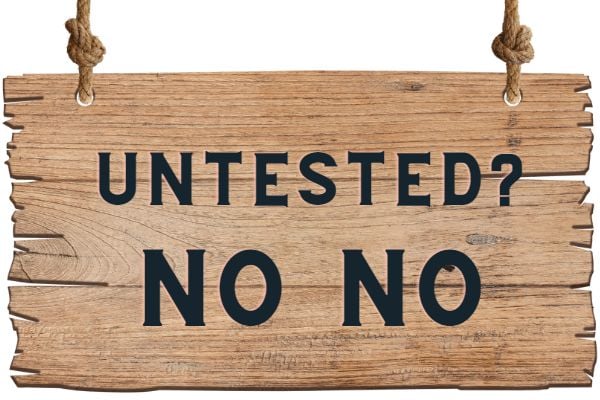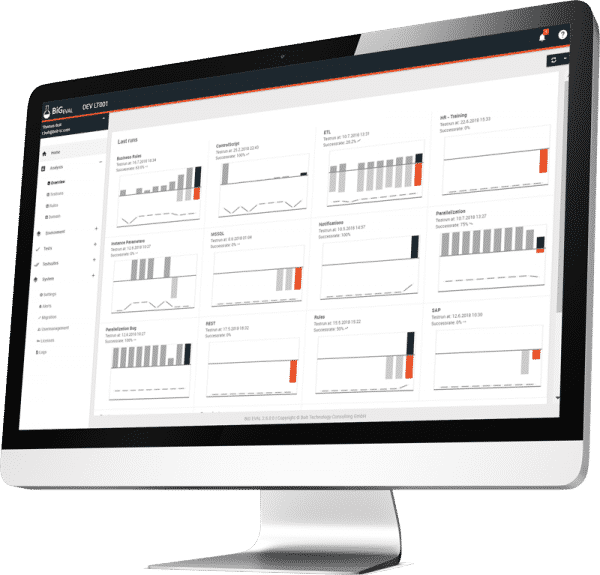Automated DATA PRODUCT Testing
Costs for Quality Assurance and Testing in Data Product Projects
In today's data-driven world, ensuring the quality of data products has become crucial for businesses to gain a competitive edge. Quality assurance and testing play a pivotal role in guaranteeing the reliability, accuracy, and usability of these products. However, the costs associated with quality assurance and testing can vary significantly depending on various factors. Understanding the importance of quality assurance and testing, the role of automation, measuring the return on investment (ROI), and the factors impacting the costs are essential for organizations aiming to optimize their resources effectively.
Understanding the Importance of Quality Assurance and Testing
A primary reason for the costs incurred in quality assurance and testing lies in their significance in the development process of data products. Quality assurance ensures that the product meets the specified requirements, while testing helps identify and rectify any defects or discrepancies. By implementing comprehensive quality assurance and testing processes, organizations can avoid potential risks and enhance user satisfaction. Moreover, it helps in building trust and credibility among customers, which is critical for the success of any data product project.
Furthermore, quality assurance and testing contribute to maintaining data integrity throughout the lifecycle of the product. They validate the accuracy of the data, ensuring that it is reliable and trustworthy for decision-making purposes. Inaccurate or unreliable data can lead to costly errors, damaging both the organization's reputation and its financial health. Therefore, the costs associated with quality assurance and testing should be viewed as a necessary investment rather than an avoidable expense.
It is essential to understand that quality assurance and testing are not one-time activities but rather continuous processes that evolve with the product. As new features are added or existing ones are modified, thorough testing must be conducted to ensure that the changes do not introduce any unforeseen issues. This iterative approach to quality assurance and testing not only improves the overall product quality but also reduces the likelihood of major defects slipping through unnoticed.
Additionally, quality assurance and testing play a crucial role in regulatory compliance for data products. Many industries have strict guidelines and regulations regarding data security and accuracy. By adhering to rigorous quality assurance and testing protocols, organizations can demonstrate their commitment to compliance and mitigate the risk of facing penalties or legal consequences due to non-compliance.

The Role of Automation in Reducing Testing Costs
Automation offers a significant opportunity to reduce the costs involved in quality assurance and testing. By leveraging automated testing tools and frameworks, organizations can streamline their testing processes, enhance efficiency, and reduce human error. Automated testing can be utilized for various testing activities, including functional testing, regression testing, performance testing, and security testing. It enables faster test execution, wider coverage, and quicker feedback, thereby saving time and resources.
Moreover, automation allows for the reusability of test cases, promoting consistency and minimizing duplication efforts. It also enables the execution of tests in parallel, further accelerating the testing cycle. Automating repetitive tasks and test scenarios frees up valuable resources, allowing them to focus on more critical aspects of the project. Although implementing automation requires initial investment and skills development, it can yield substantial long-term cost savings by reducing manual effort and enhancing productivity.
Furthermore, automation can play a crucial role in ensuring the scalability of testing efforts. As organizations grow and their software products evolve, the volume and complexity of testing requirements also increase. Automated testing can adapt to these changing needs by providing the flexibility to scale test suites, incorporate new test cases, and adjust testing parameters without significant manual intervention. This scalability aspect of automation is particularly beneficial in dynamic development environments where frequent changes and updates are the norm.
Additionally, automation contributes to improved test accuracy and reliability. Human testers are prone to errors, fatigue, and inconsistencies in executing repetitive test cases over extended periods. Automation, on the other hand, follows predefined scripts and algorithms meticulously, ensuring that tests are performed with precision and repeatability. This reliability in testing results not only enhances the overall quality of the software but also reduces the likelihood of costly defects slipping into production.

Measuring the ROI of Quality Assurance and Testing Efforts
Measuring the return on investment (ROI) of quality assurance and testing is essential for organizations to evaluate the effectiveness and efficiency of their testing efforts. By quantifying the value generated by quality assurance and testing activities, organizations can make informed decisions regarding resource allocation and optimization.
ROI measurement can be approached by considering the tangible benefits and cost savings resulting from quality assurance and testing efforts. Tangible benefits may include improved customer satisfaction, reduced defects or errors, increased operational efficiency, and enhanced data integrity. On the other hand, cost savings can be calculated by comparing the costs of quality assurance and testing against the costs associated with failures due to poor quality data products.
Additionally, organizations can leverage key performance indicators (KPIs) to monitor and measure the effectiveness of quality assurance and testing processes. KPIs such as defect density, test case coverage, test execution success rate, and cycle time can provide valuable insights into the performance and efficiency of the testing activities. By regularly measuring and analyzing these metrics, organizations can identify areas for improvement and make data-driven decisions to optimize their quality assurance and testing efforts.
Moreover, it is crucial for organizations to consider the long-term benefits of investing in quality assurance and testing. Beyond immediate cost savings and efficiency improvements, a robust quality assurance process can help build a strong reputation for the organization. Consistently delivering high-quality products can lead to increased customer loyalty and positive word-of-mouth referrals, ultimately contributing to the company's bottom line.
Furthermore, quality assurance and testing efforts play a vital role in regulatory compliance and risk management. By ensuring that products meet industry standards and regulatory requirements, organizations can mitigate the risk of costly fines, lawsuits, and damage to their reputation. Proactively investing in quality assurance can act as a safeguard against potential legal and financial repercussions, providing peace of mind to stakeholders and customers alike.
Factors Impacting the Costs of Quality Assurance
Several factors influence the costs associated with quality assurance and testing in data product projects. Understanding these factors can help organizations allocate resources efficiently and optimize their testing processes.
- Scope and Complexity: The size and complexity of the data product determine the extent of testing required. Larger and more intricate projects often require broader test coverage, more extensive test scenarios, and longer execution times, thus increasing the costs.
- Testing Environment: The infrastructure and tools required for testing, including hardware, software, and licenses, contribute to the overall testing costs. Maintenance, upgrades, and compatibility issues also affect the expenditures.
- Testing Methodologies and Techniques: The choice of testing methodologies, such as agile or waterfall, and the utilization of manual or automated testing approaches influence the costs. Agile methodologies may reduce costs through iterative testing, while automation can save resources in the long run.
- Resource Allocation: The availability and skillset of testing resources play a crucial role in determining the costs. Hiring skilled testers, providing training, and managing resource allocation efficiently can impact the overall budget.
- Time Constraints: Projects with tight deadlines often require additional resources and efforts to complete the testing activities within the given timeframe. Rushed testing may lead to compromised quality or the need for additional testing cycles.
By considering these factors and adopting strategies to mitigate their impact, organizations can manage and optimize the costs associated with quality assurance and testing effectively.
As businesses increasingly rely on data products to drive their operations and decision-making, the costs of quality assurance and testing should not be overlooked. While they may contribute to the project budget, the importance of ensuring the quality and reliability of data products cannot be overstated.
One aspect that organizations need to consider is the role of automation in reducing costs. By implementing automated testing tools and frameworks, repetitive and time-consuming tasks can be streamlined, leading to significant cost savings. Additionally, automation allows for continuous testing, enabling organizations to identify and address issues early in the development process, reducing the likelihood of costly fixes later on.
Another factor to consider is the measurement of return on investment (ROI) in quality assurance and testing. While it may be challenging to quantify the direct impact of testing on the bottom line, organizations can assess the value derived from quality assurance efforts by evaluating metrics such as customer satisfaction, reduction in defects, and improved product stability. By understanding the ROI of quality assurance, organizations can make informed decisions about resource allocation and prioritize testing activities accordingly.
Furthermore, it is essential to recognize that the costs of quality assurance and testing are influenced by various external factors. For example, regulatory requirements and industry standards may impose additional testing obligations, increasing the overall costs. Additionally, the dynamic nature of technology and the need to adapt to new platforms and devices can introduce additional complexities and costs in the testing process.
By understanding the significance of quality assurance and testing, the role of automation in reducing costs, the ROI measurement, and the factors impacting the costs, organizations can make informed decisions, minimize risks, and maximize the value derived from their data product projects.
Agile Data Warehouse Development
with automated test cases
Uncover the success story of Ifolor AG, a company that used BiG EVAL to validate data and gain trust in its decision-making process. See how data quality assurance can lead to a good gut feeling and get inspired by this compelling reference story today!

Get started today
Spend more time with your team pursuing big ideas and creating
valuable data solutions for your company.
